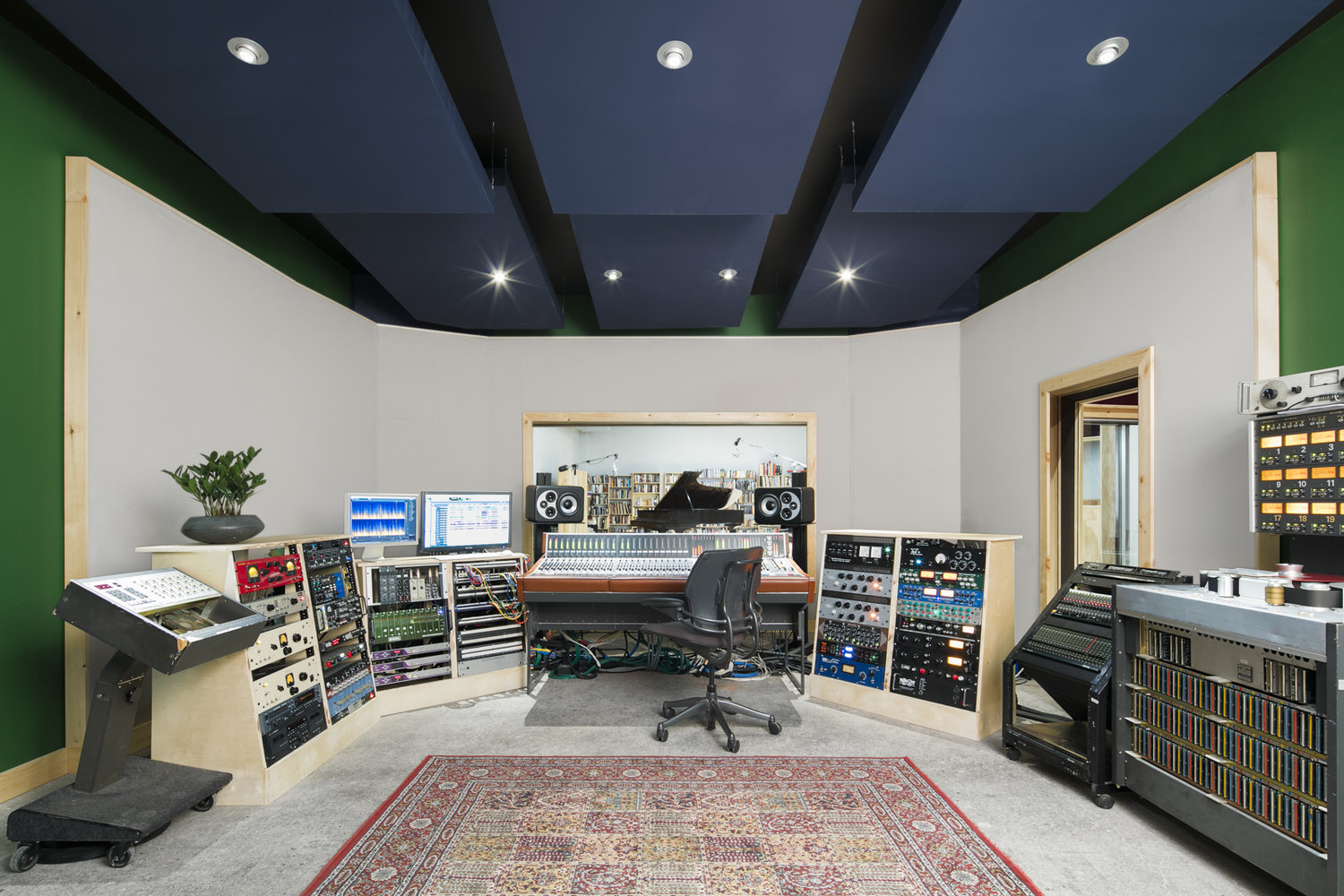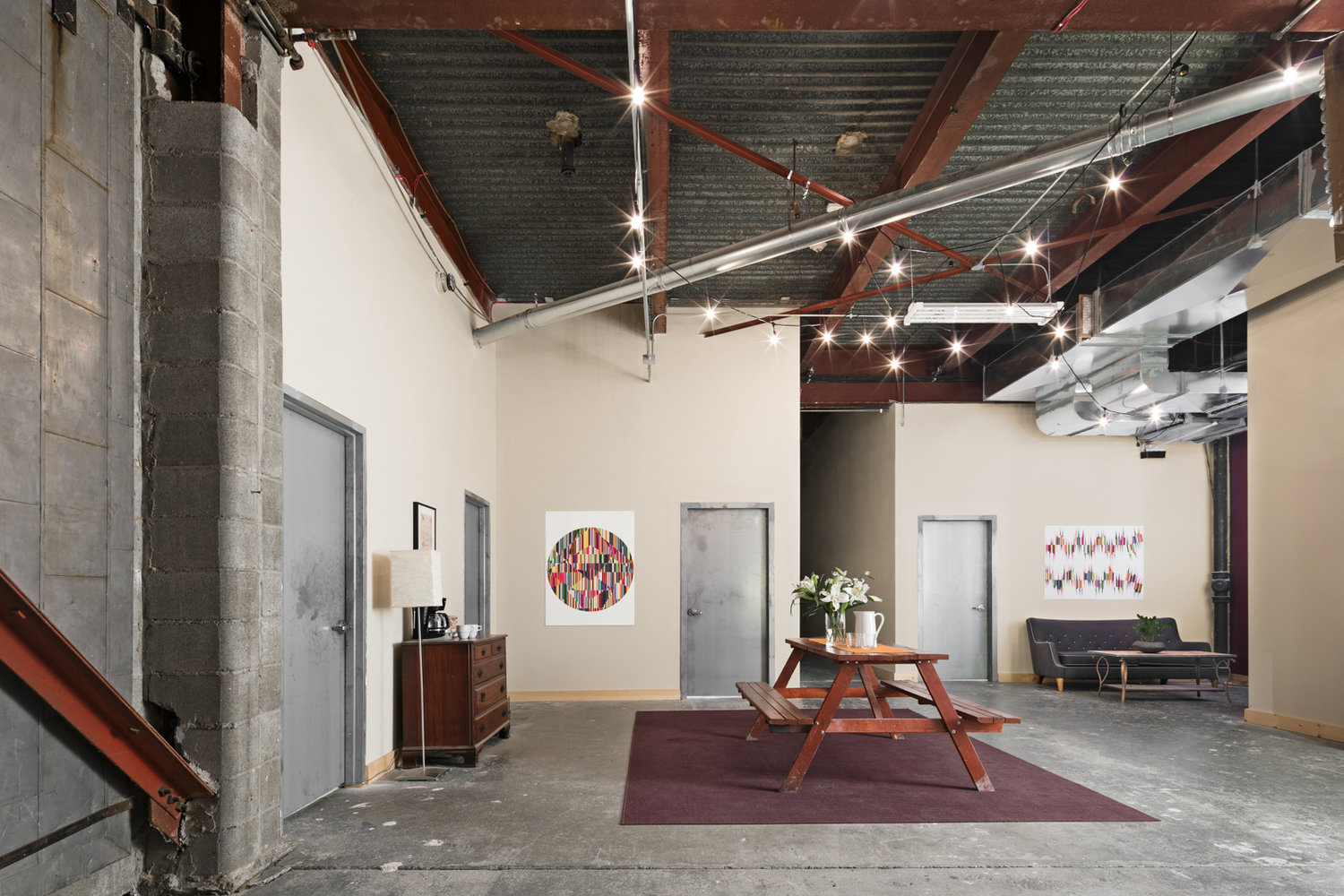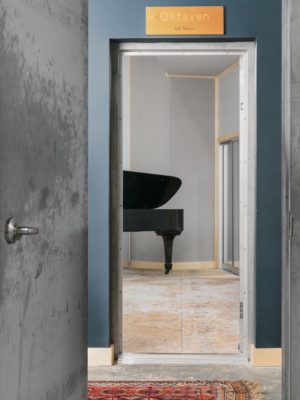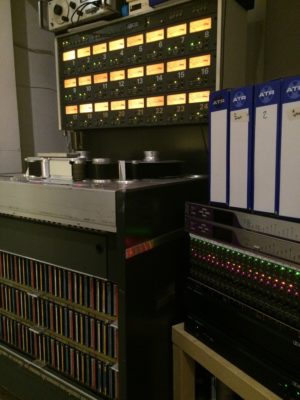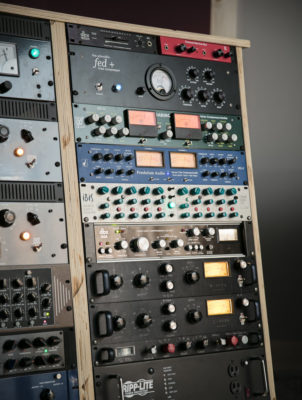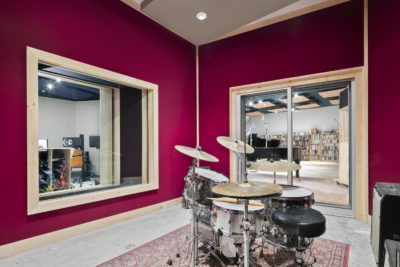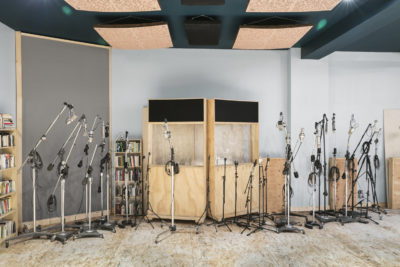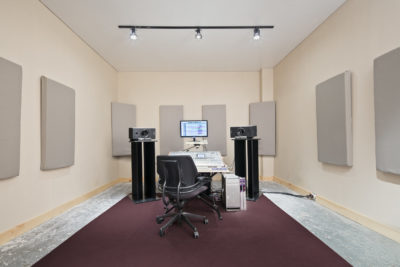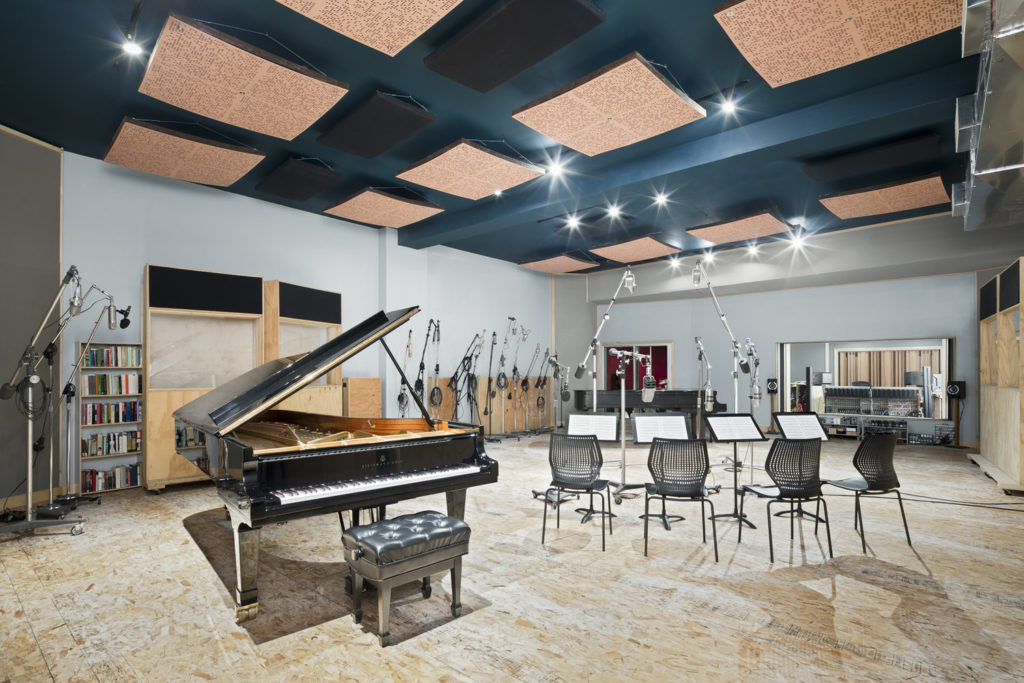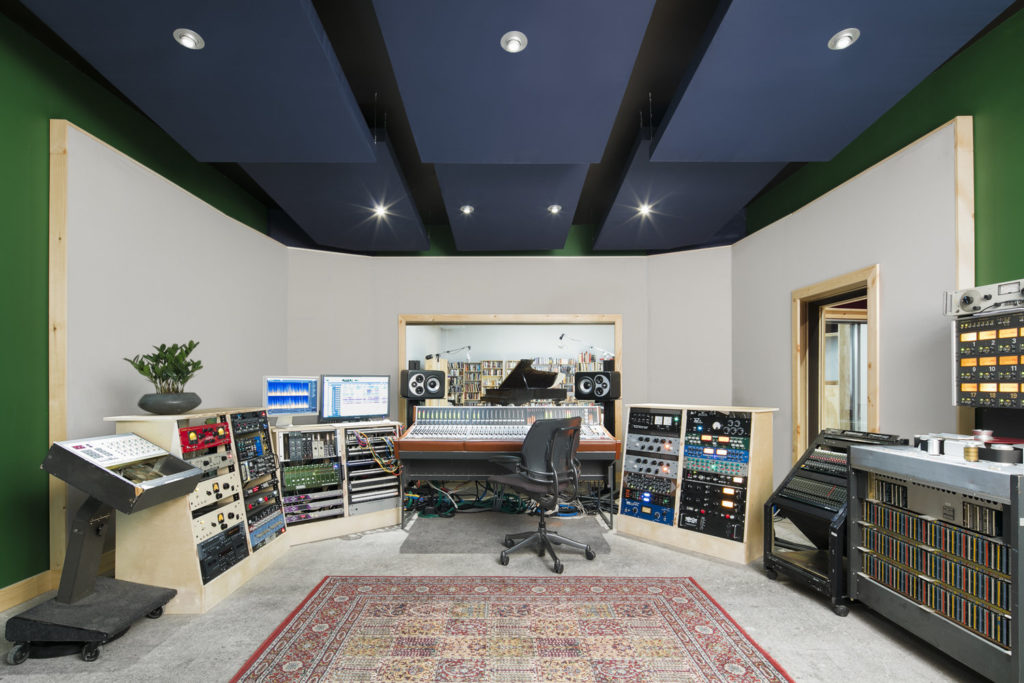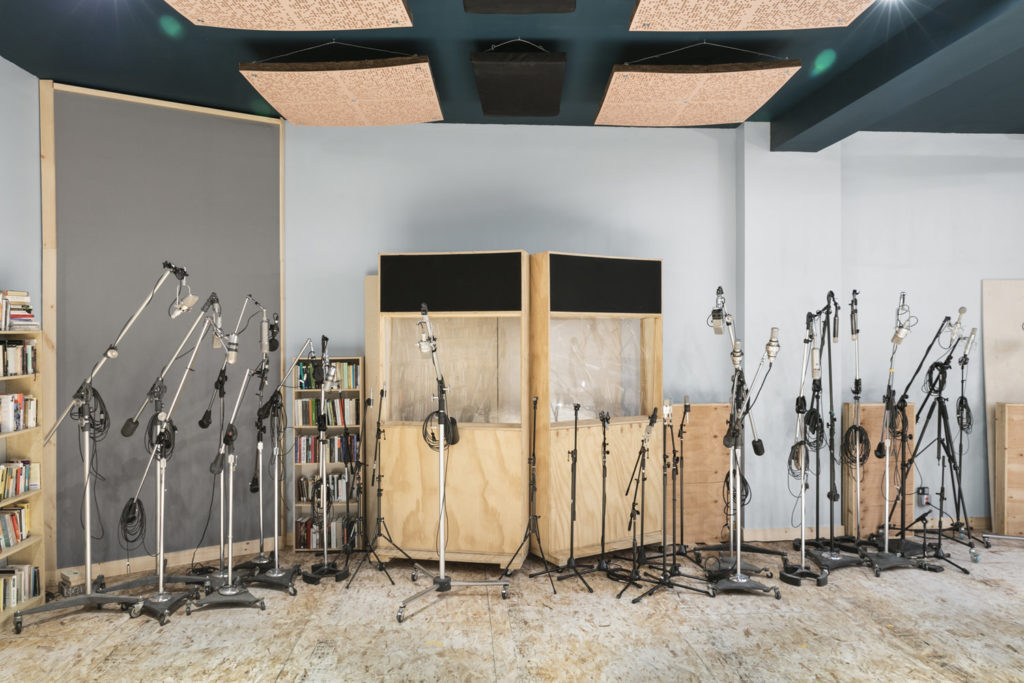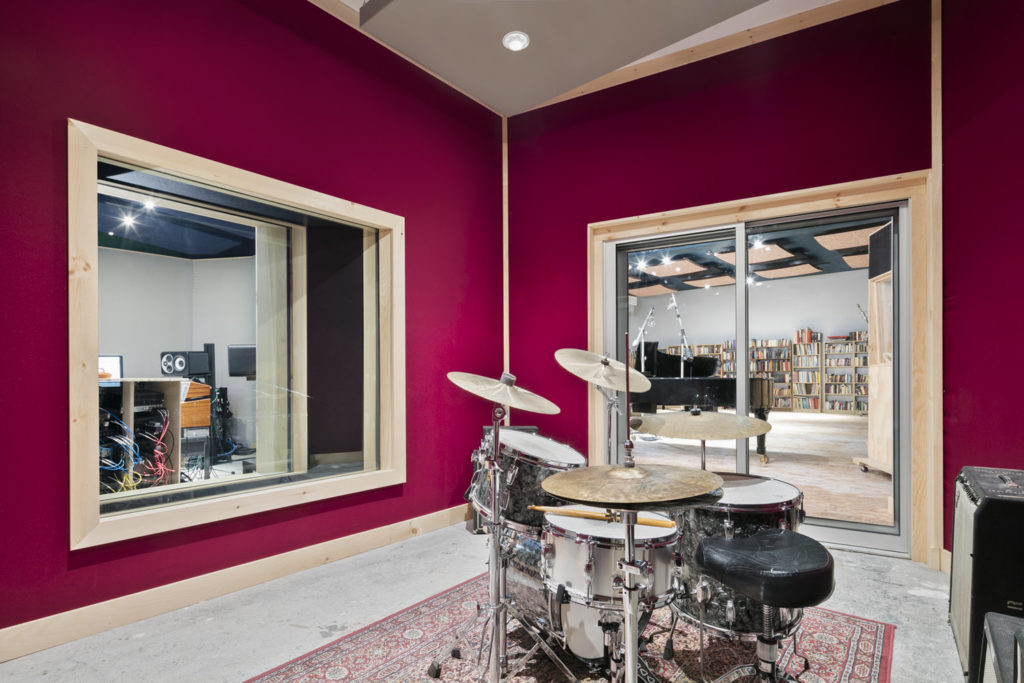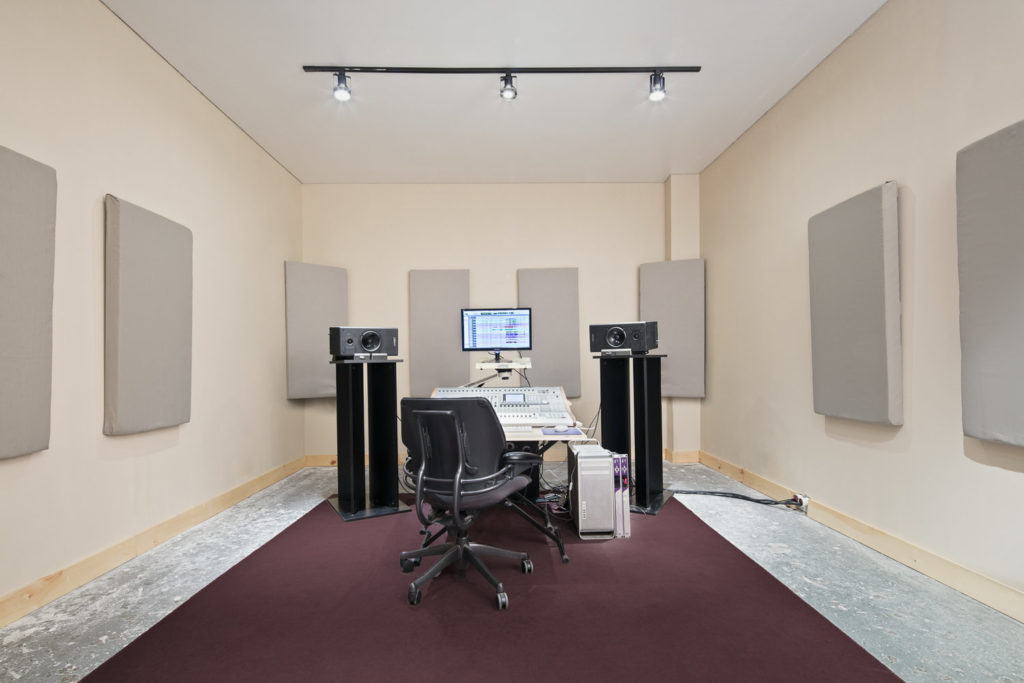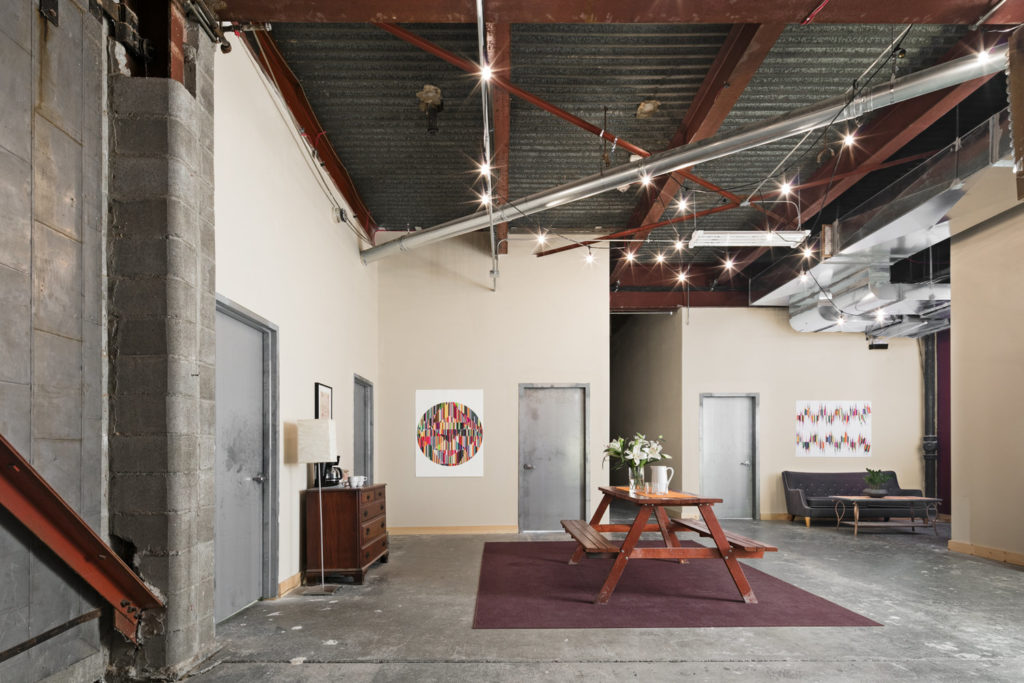Studio Tour: Oktaven Audio in Mount Vernon, NY
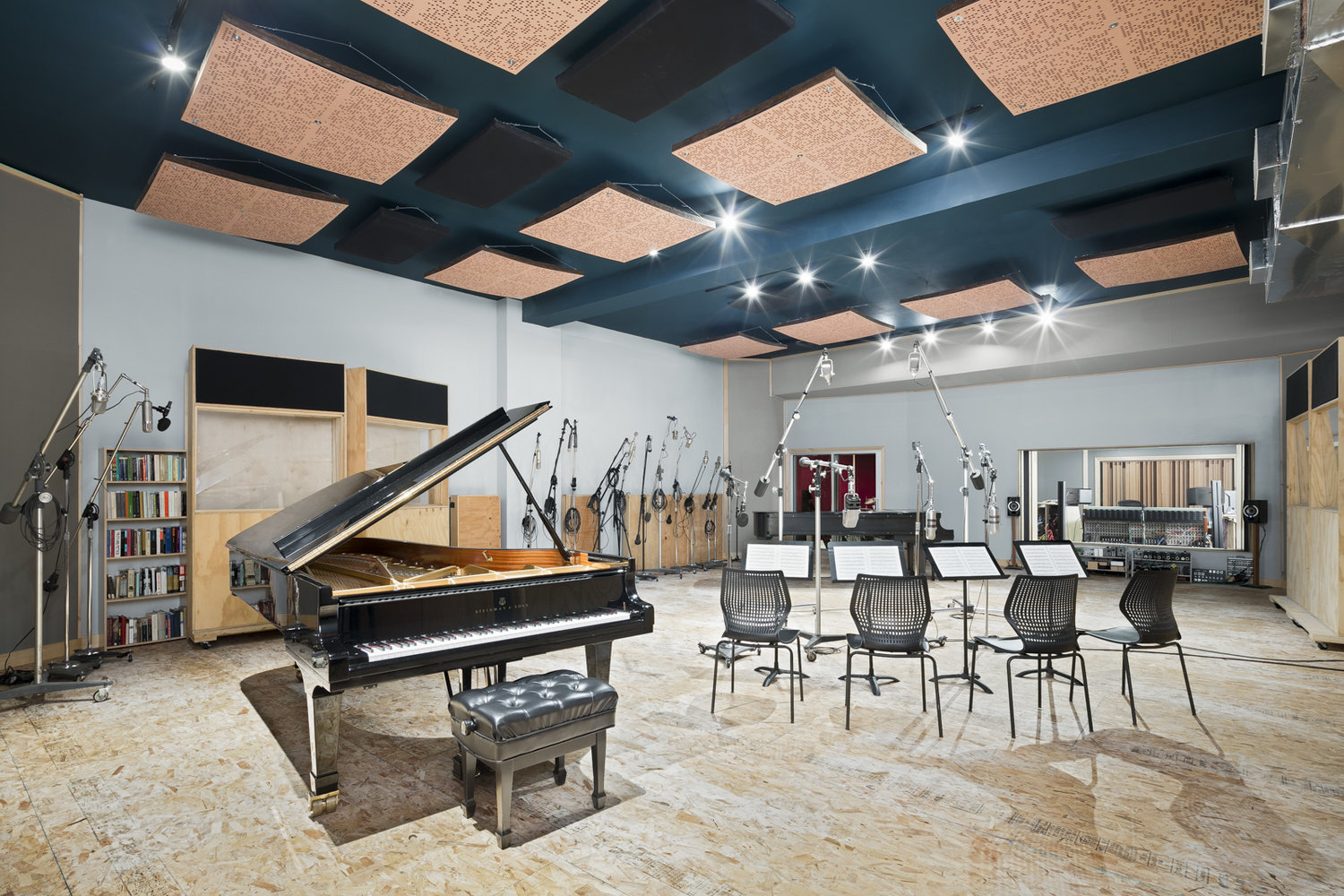
A view of the live room at the new Oktaven studio in Mount Vernon, NY, complete with a Hamburg Steinway D grand piano.
There’s nothing more stressful than moving out of your old home. It’s not only a physically demanding process, but it can be difficult to leave behind so many memories.
For Ryan Streber and Jessica Slaven, the co-owners of Oktaven Audio, their former studio space in Yonkers will forever be remembered for the wonderful music and friendships crafted there, even if their new studio is grander in every way.
Last year, this pair of engineers relocated their multi-room facility to nearby Mount Vernon, New York. Despite numerous obstacles along the way, they’ve emerged with a newly-revised Oktaven Audio designed by the world renowned FM Design team led by Francis Manzella.
Undeniably more gorgeous in its second iteration, the studio houses an impressive trove of vintage equipment and instruments, most notably a Hamburg Steinway D 9’ concert grand piano.
But before we get too far ahead of ourselves with gear envy, here’s a more detailed rundown of the facility:
Facility Name: Oktaven Audio
Location: Mount Vernon, New York
Date of Birth: Yonkers in 2009; moved to Mount Vernon in 2016.
Neighborhood Advantages: Close proximity to mass transit (Metro North and the 2 train) and major parkways, easy free parking, Jamaican and Brazilian food, and the legendary Johnny’s Pizza.
Facility Focus: Recording, mixing, editing, and mastering.
What They’re All About: Oktaven Audio specializes in classical, jazz, and acoustic music recording with a staff of conservatory-trained musicians. Two Steinway D concert grands offer some of the best piano recording options in the region, and can accommodate large ensembles of up to 35 in a large, comfortable and acoustically flexible live room.
Key Personnel:
Ryan Streber: Co-owner and head engineer, interviewed for this story.
Jessica Slaven: Co-owner, manager, and assistant engineer.
Clients/Credits: Mostly Other People Do The Killing, Claire Chase, John Zorn, Fred Hersch, Marc Copland, Nonesuch Records, Sufjan Stevens, Bearthoven, George Lewis, Michael Mizrahi, Jacob Greenberg, ACRONYM, Tyshawn Sorey, JACK Quartet, Talea Ensemble, International Contemporary Ensemble, David Smith Quintet, Brian Stokes Mitchell, Mivos Quartet, LOADBANG, String Orchestra of Brooklyn, Andy Farber Orchestra, Brooklyn Rider, Michael Brown, Billy Lester, and many more.
What was behind the decision to move to Mount Vernon?
It was multi-part. First, necessity. Our studio in Yonkers was on a piece of land that is currently being developed for a 25-story mixed-use tower, and we’d been pushed out of the space.
Next, we needed a larger space with a bigger live room, a B room, iso, a better lounge, and we wanted to improve the sound of everything.
And Mount Vernon? It’s on the Bronx border and had some available industrial real estate where we were able to find a clean space with sufficient ceiling height that’s close to the train—a 4 minute walk—but doesn’t suffer from train rumble.
Mt Vernon also has a fascinating musical history, and it shares a border with Yonkers, so we were able to maintain a bit of consistency of location with Oktaven 2.0.
How difficult was the moving process? Were there any obstacles along the way?
The moving process was arduous. We had 90 days to be out of the Yonkers space, and despite having searched for spaces for five years, we hadn’t found anything. By the time we secured what we needed, we knew everything would have to go into storage while we built.
The old studio was dismantled, and everything went into secure storage except for a pared-down remote setup that I installed in my apartment. The Steinway went into piano storage. We had to cancel and postpone sessions and absolutely crush to get our plans approved so that we could begin construction in March of 2016.
I was able to engineer some location sessions and Jessica could do some album packaging design while the studio was down, but it was very difficult to have no space for nearly six months.
What makes Oktaven Audio unique?
First, our focus on art music and my experience and expertise as a composer. Both his and Jessica’s activity as working artists engenders an empathy for the creative process that I think is pretty unusual.
Second, our 9’ Hamburg Steinway D. It’s simply gorgeous.
Third, our space. We worked hard to make it the biggest and best sounding space we could, and we’re constantly making improvements, be it to gear, treatments, or accouterment.
- A very grand Steinway hidden in lower Westchester.
- Tape!
- Racks of heart at Oktaven.
What did the acousticians and designers you brought in in bring to the project?
Our designer was Francis Manzella and FM Designs, and we worked very closely with them and our architect Robert Cane throughout the design and build phases.
Fran has designed hundreds of sought-after studios around the world, and his experience and attention to detail were critical in our ability to get through the build relatively quickly and with minimal missteps along the way.
The rooms are simple, classic designs that sound great and feel amazing to play in, and we were so grateful to him and Bob Cane for all of their knowledge and support.
- An iso booth for drums and more.
- Another view of Oktaven’s live room.
- Oktaven 2.0 adds a B room to the mix.
Tell us more about your inclusion of shelves full of books in the studio!
Ha! We had a huge library when we moved from the UWS [Upper West Side] to Yonkers to open the first studio. We had downsized to a tiny studio apartment and needed someplace to put everything.
We figured that the books were effective and available acoustic treatment, so a large part of the library was installed at Oktaven. What we didn’t expect was how popular the library would prove to be—clients have used it for solace, for title inspiration, entertainment, or to poke fun at us for owning too much Derrida.
Beyond that, a number of the volumes in the library are bound scores for reference, and we keep my collection of facsimile editions of music manuscripts on the shelves. I’ve been collecting them for 20 years and it’s become a treasure trove.
What’s the story behind your Steinway?
It is a 1987 9’ Hamburg Steinway D, completely rebuilt in 2009 by Arlan Harris and Klavierhaus. When we decided to found the business together in 2009, a primary driving force was to solve the problem posed by the real dearth of decent recording-ready pianos in NYC.
We assembled our business model and our pitch and went to piano row to secure an instrument, thinking a mid-sized Yamaha might be within initial reach. At Klavierhaus, Arlan Harris and Sujatri & Gabor Reisinger sat me at this incredible instrument and said, “this is what you guys need for your studio” and gave us a path to ownership that was realistic. I suspect we were both secretly screaming. We had our good friend, pianist Jacob Greenberg, come to give his ok, and we took the plunge, disbelieving our good fortune.
Arlan serviced it for a number of years, and it grew more beautiful. Dan Jessie has been our tech for the last four years, and he’s been doing lovely work with it. We are hyper-vigilant with maintenance and work extremely closely with Dan to keep the regulation, voicing, and tuning at as high a level as possible. Hearing people record on it is a joy.
Gear
DAWs: The A control room runs a Pro Tools HDX system with a 24X32 Burl Mothership and additional I/O via Apogee AD/DA16Xs for total of 40 X 48 analog / 16 X 16 digital I/O. The B room runs a Pro Tools HD Accel system with Apogees and a Tascam DM4800 console.
Consoles: A Studer 903 (36 channel) mixing console was originally installed at the Metropolitan Opera House as its main broadcast board. A clean and reliable console well-suited to Oktaven’s clientle.
Instruments: In addition to theHamburg Steinway D, Oktaven houses a beautiful New York Steinway D on long-term loan, as well as a small library of acoustic and electric guitars and basses, a variety of classic tube amps, an early ‘60s Ludwig drum kit, an assortment of stomp boxes, and various other goodies.
Secret Weapons: I’ve personally built a number of tube mics that get used daily including M49, U47, and C12 clones.
Outboard/Hardware/Tape: Studer A800 MKIII 24-track 2” machine with 24 channels of Dolby SR. An Ampex 351 1/4” stereo deck is currently being restored.
Michael Duncan is a record producer, engineer, and writer who lives in NYC.
- The main live room at Oktaven.
- The main control room at Oktaven
- Another view of Oktaven’s live room.
- An iso booth for drums and more.
- Oktaven 2.0 adds a B room to the mix.
- Part of an expanded lounge at the new Oktaven.
Please note: When you buy products through links on this page, we may earn an affiliate commission.







